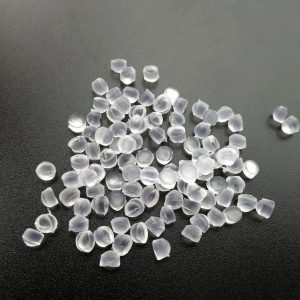Medical catheters are thin, flexible tubes used to deliver fluids, medications, or gases directly into the body or to withdraw fluids from the body. They are widely used in various medical procedures, including diagnostic tests, surgeries, and long-term treatment of chronic conditions. Catheters are made from a variety of materials, each with unique properties that make them suitable for different applications. In this article, we will discuss some of the most common materials used for medical catheters.
- Polyurethane (PU)
Polyurethane is a versatile polymer widely used in the medical industry due to its biocompatibility, flexibility, and resistance to kinking and compression. PU catheters are commonly used for long-term applications such as intravenous access, dialysis, and urinary catheterization. They can be manufactured with varying levels of stiffness and can be coated with hydrophilic or antimicrobial coatings to reduce the risk of infection.
- Silicone
Silicone is another popular material for medical catheters due to its biocompatibility, flexibility, and resistance to high temperatures and chemicals. Silicone catheters are commonly used for drainage, feeding, and urinary catheterization. They are also used for long-term applications, as they are less prone to tissue irritation and infection than other materials.
- PVC (Polyvinyl chloride)
PVC is a thermoplastic polymer widely used in the medical industry due to its low cost and easy manufacturability. PVC catheters are commonly used for short-term applications such as urinary catheterization, but they are less commonly used for long-term applications due to their tendency to cause tissue irritation and inflammation.
- Nylon
Nylon is a strong and durable polymer that is commonly used for medical catheters due to its high tensile strength and resistance to abrasion. Nylon catheters are commonly used for vascular access, but they are less commonly used for urinary or drainage applications due to their stiffness and propensity to kink.
- Polytetrafluoroethylene (PTFE)
PTFE, commonly known as Teflon, is a synthetic fluoropolymer widely used in medical catheters due to its low friction coefficient and resistance to high temperatures and chemicals. PTFE catheters are commonly used for vascular access and drainage applications, as they are less prone to clotting and occlusion than other materials.
- Stainless steel
Stainless steel is a metal alloy widely used in medical catheters due to its strength, durability, and resistance to corrosion. Stainless steel catheters are commonly used for vascular access and drainage applications, but they are less commonly used for urinary or feeding applications due to their stiffness and potential for tissue trauma.
- Nitinol
Nitinol is a shape memory alloy composed of nickel and titanium that is commonly used in medical catheters due to its flexibility, kink resistance, and shape retention. Nitinol catheters are commonly used for vascular access and drainage applications, as they can be easily navigated through the body’s intricate vasculature without causing trauma or damage.
In conclusion, medical catheters are made from a variety of materials, each with unique properties that make them suitable for different applications. Polyurethane, silicone, PVC, nylon, PTFE, stainless steel, and nitinol are some of the most common materials used for medical catheters. When choosing a catheter material, healthcare providers must consider factors such as biocompatibility, flexibility, stiffness, kink resistance, ease of navigation, and resistance to infection and clotting. By choosing the appropriate catheter material, healthcare providers can improve patient outcomes and reduce the risk of complications associated with catheterization.



